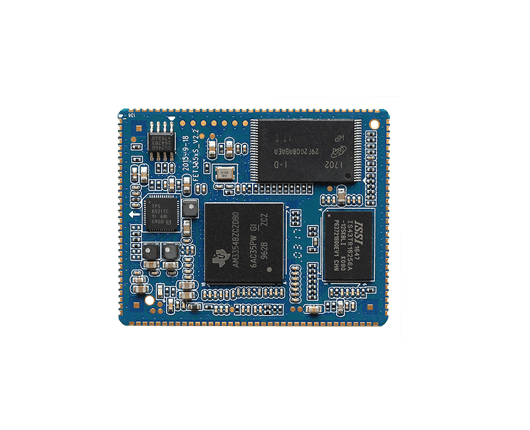
About the functions of AM3354 SoM on Intelligent Transportation
Speeding has become the leading killer of traffic accidents, especially on fast roads such as highways, which cause more frequent traffic accidents. Therefore, the purpose of installing the speedometer is to effectively reduce traffic accidents caused by speeding. (It is now widely used in industries such as police speed testing.)
First, intelligent traffic wide area radar speedometer concept understanding
1, What is the radar speed?
Principle: Speed radar mainly utilizes the Doppler Effect, which reflects the signal frequency higher than the transmitter frequency when the target approaches the radar antenna, and vice versa, when the target is away from the antenna, the reflected signal frequency will be lower than the transmitter frequency. The relative velocity of the target and radar can then be calculated by changing the value of the frequency.
2, Intelligent transportation network in the wide area radar speed understanding
(1) Detection technology is divided into three categories: points, faces, nets.
"Point" is the traditional coil and geomagnetic way, mainly to achieve point data acquisition;
"Surface" is mainly video and radar technology, these two technologies in recent years, the rapid development of large areas can be achieved detection;
"Net" is mainly the current Internet companies to provide a sample of vehicle trajectory data, this data for the macro-decision-making of traffic provides a better support.
(2) Expansion: The development of traffic radar technology can be divided into three main stages.
The first is simple speed measurement technology, using the Doppler principle to achieve target speed detection, but low speed target detection accuracy is low.
The second is speed measurement and ranging technology, the typical application is the snap trigger radar, in the specified range to provide data trigger signal.
The third is speed measurement, range measurement and angular (wide area radar), the concept of angle into the accurate determination of each target's immediate position and instant speed.
Second, radar speedometer
Radar speedometers on general roads are divided into fixed speed measurement and mobile speed measurement. Fixed speed is divided into fixed-point radar speed measurement and interval speed measurement. Fixed speed as the name implies is to specify a point-mounted speedometer to carry out fixed-point speed measurement. Different from the flexibility of mobile speed measurement, mobile speedometer can be in different locations on the same road, can also be different roads for flexible speed measurement, generally mobile speed measurement in the way of police car patrol speed measurement.
1) Highway crossbar top-mounted
By placing the speedometer on a gantry or other crossbar, the speedometer is placed at an angle to the ground (the speedometer should not be more than 30 degrees from the road angle).
|
|
|
2) Move the speedometer
Install the radar speedometer in a traffic police patrol car or place it on a tripod on both sides of the road for a point-to-point speed measurement.
Third, the recommended solution: FET335XS core board
FET335XS core board ARM Cortex-A8 architecture, operating frequency 800MHz. All components of the core board are industrial-grade, the whole board operating temperature of -40 degrees C to 85 degrees C, after a rigorous high and low temperature test.
Wide area radar module Smartmicro radar: monitoring road information, only output vehicle data, the industry mainly monitors traffic event analysis, radar data processing unit is required.
The reason for the recommendation
- 1. Module interface: Net Port, 485 serial port;
- 2. System: linux system;
- 3. Main frequency: 800MHz-1GHz;
- 4. Temperature width: Industrial grade;
- 5. Native network mouth: 2 Lanes, 1 lane to connect the back server, 1 way, to the wide area radar module;
- 6. Serial: 1-4 paths, 485, wide area radar module;
- 7. Customer demand: 2 gigabits, stamp holes;
- 8. Solutions: Highway, Gantry frame;
- 9. Business: to achieve radar data analysis and processing, monitoring traffic incidents, uploading the central server, auxiliary traffic control departments to monitor vehicle information.


